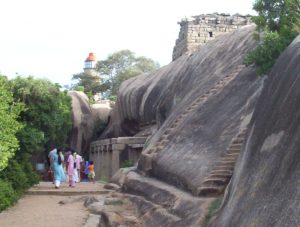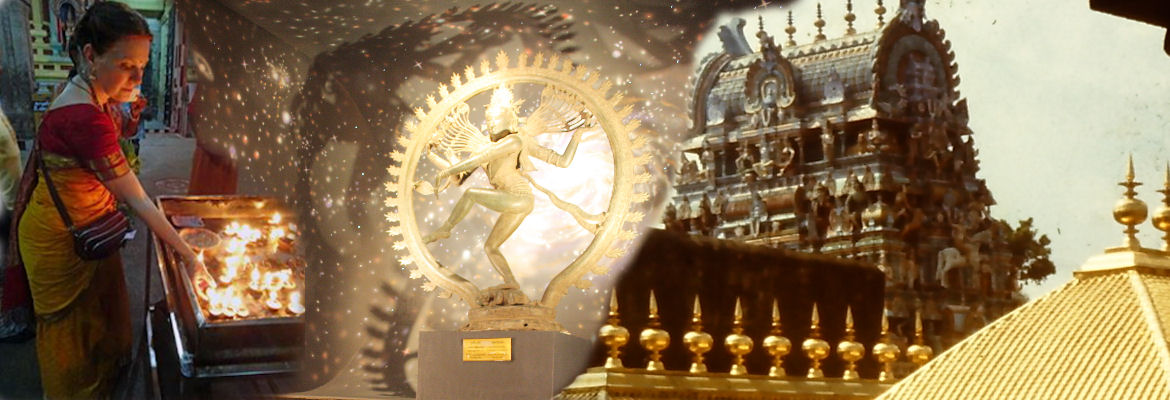In the 18th century Mahabalipuram was one of the ancient sites for which Jacob Haafner had a lot of respect and enthusiasm. A Dutch VOC employee and traveller he wrote about it in one of his travelogues. Here he describes the rock cut pavilions and pagodas.

Not far from the beach stands an average mountain that is worthy of all attention and observation; it serves the mariners approaching the shore or sailing by as a beacon or guide, and the curious and inquisitive finds abundant objects and substance for wonder and contemplation. When one approaches this hill or mountain from the north side, one can find such a multitude of memorials and ruins, that with the first glance one would believe to be in a fossilized city.
From the sea side, at the foot of the hill, stands a very beautiful pagoda, which, with all her columns and ornaments, is formed from one piece or only just one stone.
In this pagoda are found all around, a multitude of more than life-size statues, in their niches, together all chiseled from the same rock, as well as the image of a man, of a colossal size, with a miter on his head, which, chained by hands and feet, laying in a kind of Sarcophagus (grave) which stands in the center of the temple.
Here and there lie huge boulders, some fifteen feet high, and four times as long; only on one side filled with images in bas-relief, much larger than life, in different postures and characters: for what they served, or would have served, I can not understand.
Further on we see a great and spacious hall, deeply carved into the mountain, with three rows of columns; all together of a single piece.
This cave or excavation is according to the same plan as that of present-day Chauderies, and seems to have served for that end also. On either side of the entrance stands a row of images, which as well as the front pillars are very consumed by the sharp sea air.
What deserves further comment are the spacious and wide stairs carved in four different locations in the mountain, along which one can climb it to the top very easily.
Halfway the mountain on the west side, one arrives at a temple, also hewn from one and the same rock, the walls of which are full of imagery; well executed, and in a still perfect state as not being exposed to sea air. From this temple one climbs up several flights of stairs to the top of the mountain, on which one finds a mass of broken columns and statues, covering the whole surface, finding clear proof therein that formerly there must have stood immense palaces and other buildings.
From there going down to the south side of the mountain, along staircases, which, from the top down, are carved into the rock, one arrives again at another cave sculptured deep into the mountain, supported by a mass of columns. From the altars that are in there, as also from the statues of a multitude of gods and goddesses, one would say that this cave would have been appropriate towards a religious purpose. One sees among others Bieshn as a colossal figure, lying in a kind of bed, his pillow is an excited snake; the whole so well like all the other images hewn from the cliff, and attached to it still from below.
In this mountain as well as in all the other mountains and hills that form this valley, one finds a multitude of such temples and ruins; as well as caves and halls carved deep into the rock; Some of these have a spacious entrance and are adorned with beautiful imagery.
You can read the complete chapter HERE

Ravi
An inquisitive traveller,Mr.Haafner was,his eyes beheld the byegone and mysterious ethos of indian culture